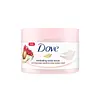What's inside
What's inside
 Key Ingredients
Key Ingredients

 Benefits
Benefits

 Concerns
Concerns

 Ingredients Side-by-side
Ingredients Side-by-side

Sucrose
HumectantParaffinum Liquidum
EmollientCera Microcristallina
Emulsion StabilisingParaffin
PerfumingElaeis Guineensis Oil
EmollientIsopropyl Myristate
EmollientPEG-7 Glyceryl Cocoate
EmulsifyingCera Alba
EmollientCetearyl Alcohol
EmollientButyrospermum Parkii Butter
Skin ConditioningJuglans Regia Shell Powder
AbrasiveBertholletia Excelsa Seed Oil
EmollientTocopherol
AntioxidantMacadamia Ternifolia Seed Oil
EmollientGossypium Herbaceum Seed Oil
Skin ConditioningSqualane
EmollientTheobroma Grandiflorum Seed Butter
Skin ConditioningHydrogenated Castor Oil
EmollientParfum
MaskingSucrose, Paraffinum Liquidum, Cera Microcristallina, Paraffin, Elaeis Guineensis Oil, Isopropyl Myristate, PEG-7 Glyceryl Cocoate, Cera Alba, Cetearyl Alcohol, Butyrospermum Parkii Butter, Juglans Regia Shell Powder, Bertholletia Excelsa Seed Oil, Tocopherol, Macadamia Ternifolia Seed Oil, Gossypium Herbaceum Seed Oil, Squalane, Theobroma Grandiflorum Seed Butter, Hydrogenated Castor Oil, Parfum
Water
Skin ConditioningGlycerin
HumectantHydrated Silica
AbrasiveSodium Lauroyl Isethionate
CleansingStearic Acid
CleansingSodium Stearate
CleansingCocamidopropyl Betaine
CleansingParfum
MaskingSodium Palmitate
CleansingCetearyl Alcohol
EmollientLauric Acid
CleansingSodium Isethionate
CleansingJojoba Esters
EmollientPhenoxyethanol
PreservativeHydroxyacetophenone
AntioxidantSodium Chloride
MaskingSodium Palm Kernelate
CleansingTetrasodium EDTA
Sodium Benzoate
MaskingZinc Oxide
Cosmetic ColorantPunica Granatum Seed Powder
AbrasiveButyrospermum Parkii Butter
Skin ConditioningSodium Hydroxide
BufferingBenzyl Salicylate
PerfumingHexyl Cinnamal
PerfumingLinalool
PerfumingCI 77491
Cosmetic ColorantCI 77891
Cosmetic ColorantCI 17200
Cosmetic ColorantWater, Glycerin, Hydrated Silica, Sodium Lauroyl Isethionate, Stearic Acid, Sodium Stearate, Cocamidopropyl Betaine, Parfum, Sodium Palmitate, Cetearyl Alcohol, Lauric Acid, Sodium Isethionate, Jojoba Esters, Phenoxyethanol, Hydroxyacetophenone, Sodium Chloride, Sodium Palm Kernelate, Tetrasodium EDTA, Sodium Benzoate, Zinc Oxide, Punica Granatum Seed Powder, Butyrospermum Parkii Butter, Sodium Hydroxide, Benzyl Salicylate, Hexyl Cinnamal, Linalool, CI 77491, CI 77891, CI 17200
 Reviews
Reviews

Alternatives
Ingredients Explained
These ingredients are found in both products.
Ingredients higher up in an ingredient list are typically present in a larger amount.
This ingredient is also known as shea butter. It is an effective skin hydrator and emollient.
Emollients help soothe and soften your skin. It does this by creating a protective film on your skin. This barrier helps trap moisture and keeps your skin hydrated. Emollients may be effective at treating dry or itchy skin.
Shea butter is rich in antioxidants. Antioxidants help fight free-radicals, or molecules that may harm the body. It is also full of fatty acids including stearic acid and linoleic acid. These acids help replenish the skin and keep skin moisturized.
While Shea Butter has an SPF rating of about 3-4, it is not a sunscreen replacement.
Shea butter may not be fungal acne safe. We recommend speaking with a professional if you have any concerns.
Learn more about Butyrospermum Parkii ButterCetearyl alcohol is a mixture of two fatty alcohols: cetyl alcohol and stearyl alcohol. It is mainly used as an emulsifier. Emulsifiers help prevent the separation of oils and products. Due to its composition, it can also be used to thicken a product or help create foam.
Cetearyl alcohol is an emollient. Emollients help soothe and hydrate the skin by trapping moisture.
Studies show Cetearyl alcohol is non-toxic and non-irritating. The FDA allows products labeled "alcohol-free" to have fatty alcohols.
This ingredient is usually derived from plant oils such as palm, vegetable, or coconut oils. There is debate on whether this ingredient will cause acne.
Due to the fatty acid base, this ingredient may not be Malassezia folliculitis safe.
Learn more about Cetearyl AlcoholParfum is a catch-all term for an ingredient or more that is used to give a scent to products.
Also called "fragrance", this ingredient can be a blend of hundreds of chemicals or plant oils. This means every product with "fragrance" or "parfum" in the ingredients list is a different mixture.
For instance, Habanolide is a proprietary trade name for a specific aroma chemical. When used as a fragrance ingredient in cosmetics, most aroma chemicals fall under the broad labeling category of “FRAGRANCE” or “PARFUM” according to EU and US regulations.
The term 'parfum' or 'fragrance' is not regulated in many countries. In many cases, it is up to the brand to define this term.
For instance, many brands choose to label themselves as "fragrance-free" because they are not using synthetic fragrances. However, their products may still contain ingredients such as essential oils that are considered a fragrance by INCI standards.
One example is Calendula flower extract. Calendula is an essential oil that still imparts a scent or 'fragrance'.
Depending on the blend, the ingredients in the mixture can cause allergies and sensitivities on the skin. Some ingredients that are known EU allergens include linalool and citronellol.
Parfum can also be used to mask or cover an unpleasant scent.
The bottom line is: not all fragrances/parfum/ingredients are created equally. If you are worried about fragrances, we recommend taking a closer look at an ingredient. And of course, we always recommend speaking with a professional.
Learn more about Parfum